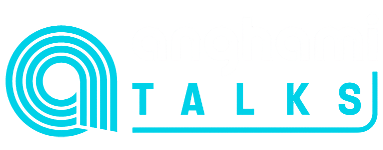


4 years ago, I got this amazing opportunity to work at Anghami as a Senior Designer, and I definitely consider myself lucky. Not only are they coolest startup in Lebanon, but the way the management empowers you to grow in your work is a career goal!
I started to work on branding and campaigns, then slowly found myself drifting to become a UX designer.
Here are my key learnings during this journey:
Consistency
I never worked in-house before, so one of the main things I had to learn is consistency; and I don’t just mean fonts, colors, sizes, dimensions and artworks but also the overall look & feel of the product while taking care of the platform restrictions and its native behavior.
Lets take an example of issue we have with color consistency!
I’m pretty sure I can find at least 50 shades of grey in the app and this issue as minor as it seems, is actually a big concern for me as a UXer.
I never had a guidebook and everything was specced quickly based on specific feature need. This issue can be solved once we have our “Anghami material design” finalized.
Research & Usability
Not everything you see on Pinterest or Dribble is actually usable.
Yea I scroll a lot looking at those beautiful screenshots, but are they usable in our case? Can we fit the data or features we have in the same format they did?
This is one of the most important thing you learn while designing a specific need. Having inspiration is cool but usability comes first.
A small advice, always take your time to design with proper data. Never rely on Lorem Ipsum. Always try to pick the worst case scenario and try to make it look pretty.



Prioritizing and Obvious
I used to web design before joining Anghami, it’s pretty different from in house design.
EVERY DETAIL MATTERS!
Prioritizing in UX is key. You want people to look at the main title first, then section name, then description. You want easily scannable materials with a well structured hierarchy. You want a neat UI after all.



In parallel, you struggle to actually get more taps or exposure for new features. You want people to notice something more than the others. You have to iterate to get the most out of a button wether in UI or in copywriting. You want to drive focus and attention in a certain way to a certain feature.
Our main moto is being obvious. It’s always a winning argument when you say the word obvious.
Be aware, when designing for obvious, your UI might get crowded at some points, so always know when to take a step back from obvious to remove the clutter and establish a neat UI again.



Patience & Being Diplomatic
Not everything you ever design will see the light of day, so I had to be patient. But on the other hand I learned how to design in pieces. At Anghami, we atomize every big feature, and we release in phases.
Sometimes for a designer, changing everything will seem so easy, but technically, every single modification comes along with a huge amount of work. Sometimes we work on a feature for around 1 year before releasing fully.
As a startup, everyone has an opinion and not every opinion is a proper feedback. Sometimes subjective opinion can be annoying to a designer, while constructive feedback can lead to a better result. Being diplomate is actually the way I learned to handle every kind of opinion, and it helped me learn which one to take into consideration and which one to disregard.
The winning situation will be a feedback backed with data, and an argument proved by numbers.
Automation
We work with dynamic data. We know that some of our users will prefer an artist over the other. We took this to a whole new level when we actually found a solution to give each user a custom cover art and not just a custom list of song.



As part of automation, we did the same process to help curators create the right playlist cover for their playlists. Just one click and boom, you now have a consistent, well designed cover art.



The power of UI trends
UI trends has evolved massively in Anghami.
We changed from having heavy amount of purple used to barely using it for highlighting in Light mode.
We removed all background blur to adopt dominant color instead.
We shifted from purple tone in photo editing to colorful statement images.
Rounded CTA’s were introduced, card radius was enhanced, bigger component and less crowded screens were our trend lately.
The whole iconography style has changed, we adopted a very light rounded style. And we finally introduced dark mode.






Empty screens are essentials
These specific screens define your very first impression. You want people to start taking actions, not just stare at an empty canvas and wondering what they do next.
This is an ultimate way to actually onboard a user for each feature without overwhelming him with amount of tooltips at the start of his experience.



We chose at Anghami to be fun so we used illustrations as a way to communicate in app with the user.
UX is never done! It’s always a work in progress.







